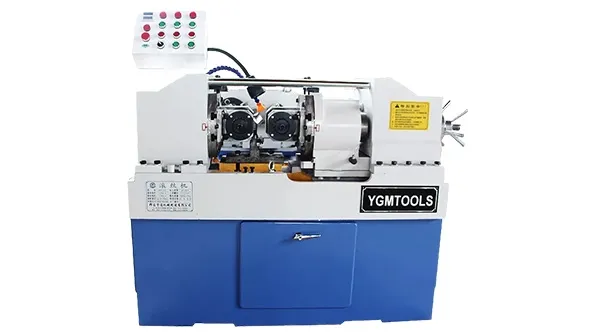
-
 Afrikaans
Afrikaans -
 Albanian
Albanian -
 Amharic
Amharic -
 Arabic
Arabic -
 Armenian
Armenian -
 Azerbaijani
Azerbaijani -
 Basque
Basque -
 Belarusian
Belarusian -
 Bengali
Bengali -
 Bosnian
Bosnian -
 Bulgarian
Bulgarian -
 Catalan
Catalan -
 Cebuano
Cebuano -
 Corsican
Corsican -
 Croatian
Croatian -
 Czech
Czech -
 Danish
Danish -
 Dutch
Dutch -
 English
English -
 Esperanto
Esperanto -
 Estonian
Estonian -
 Finnish
Finnish -
 French
French -
 Frisian
Frisian -
 Galician
Galician -
 Georgian
Georgian -
 German
German -
 Greek
Greek -
 Gujarati
Gujarati -
 Haitian Creole
Haitian Creole -
 hausa
hausa -
 hawaiian
hawaiian -
 Hebrew
Hebrew -
 Hindi
Hindi -
 Miao
Miao -
 Hungarian
Hungarian -
 Icelandic
Icelandic -
 igbo
igbo -
 Indonesian
Indonesian -
 irish
irish -
 Italian
Italian -
 Japanese
Japanese -
 Javanese
Javanese -
 Kannada
Kannada -
 kazakh
kazakh -
 Khmer
Khmer -
 Rwandese
Rwandese -
 Korean
Korean -
 Kurdish
Kurdish -
 Kyrgyz
Kyrgyz -
 Lao
Lao -
 Latin
Latin -
 Latvian
Latvian -
 Lithuanian
Lithuanian -
 Luxembourgish
Luxembourgish -
 Macedonian
Macedonian -
 Malgashi
Malgashi -
 Malay
Malay -
 Malayalam
Malayalam -
 Maltese
Maltese -
 Maori
Maori -
 Marathi
Marathi -
 Mongolian
Mongolian -
 Myanmar
Myanmar -
 Nepali
Nepali -
 Norwegian
Norwegian -
 Norwegian
Norwegian -
 Occitan
Occitan -
 Pashto
Pashto -
 Persian
Persian -
 Polish
Polish -
 Portuguese
Portuguese -
 Punjabi
Punjabi -
 Romanian
Romanian -
 Russian
Russian -
 Samoan
Samoan -
 Scottish Gaelic
Scottish Gaelic -
 Serbian
Serbian -
 Sesotho
Sesotho -
 Shona
Shona -
 Sindhi
Sindhi -
 Sinhala
Sinhala -
 Slovak
Slovak -
 Slovenian
Slovenian -
 Somali
Somali -
 Spanish
Spanish -
 Sundanese
Sundanese -
 Swahili
Swahili -
 Swedish
Swedish -
 Tagalog
Tagalog -
 Tajik
Tajik -
 Tamil
Tamil -
 Tatar
Tatar -
 Telugu
Telugu -
 Thai
Thai -
 Turkish
Turkish -
 Turkmen
Turkmen -
 Ukrainian
Ukrainian -
 Urdu
Urdu -
 Uighur
Uighur -
 Uzbek
Uzbek -
 Vietnamese
Vietnamese -
 Welsh
Welsh -
 Bantu
Bantu -
 Yiddish
Yiddish -
 Yoruba
Yoruba -
 Zulu
Zulu
Flat Die Thread Rolling Machine for Precision Manufacturing Solutions and Applications
The Evolution of Thread Rolling Machines with Flat Dies
Thread rolling technology has witnessed significant advancements over the years, optimizing the production process of threaded fasteners and enhancing the efficiency of manufacturing operations. Among various methods, the use of thread rolling machines with flat dies has emerged as a popular choice in various industrial applications.
Thread rolling is a cold forming process that deforms the material to create threads, significantly improving the mechanical properties of the produced parts. Unlike traditional cutting methods, which remove material, thread rolling preserves material integrity by compressing it, resulting in stronger and more durable threads. This process is particularly advantageous for producing high-strength fasteners, as it minimizes any potential micro-cracks that might occur during cutting.
Flat die thread rolling machines operate on a principle where the workpiece is placed between two flat dies that feature the desired thread profile. As the machine applies pressure, the dies roll over the workpiece, forming threads in a continuous motion. This method offers numerous benefits, including improved dimensional accuracy and a smoother finish, which are essential for applications requiring high performance and reliability.
thread rolling machine flat die product

The versatility of flat die thread rolling machines allows them to handle a variety of materials, including stainless steel, carbon steel, and aluminum. This adaptability makes them an ideal choice for manufacturers looking to produce different types of fasteners. Additionally, the machines can be adjusted to various thread sizes and lengths, significantly reducing setup times and enhancing production flexibility.
Another significant advantage of flat die thread rolling machines is their energy efficiency. Compared to other manufacturing processes, thread rolling requires less energy, leading to cost savings and a lower environmental impact. As companies strive to adopt more sustainable practices, this aspect of thread rolling becomes increasingly appealing.
Modern thread rolling machines are also equipped with advanced technological features, including computer numeric control (CNC) systems that allow for greater precision and automation. CNC technology enables manufacturers to produce more intricate designs and reduces the potential for human error, further improving quality control.
In conclusion, the development of thread rolling machines with flat dies represents a pivotal advancement in manufacturing technology. By enhancing the strength, durability, and efficiency of thread production, these machines play a crucial role in various industries. As technology continues to evolve, so too will the capabilities of thread rolling machines, ensuring they remain indispensable tools in the manufacturing landscape.
